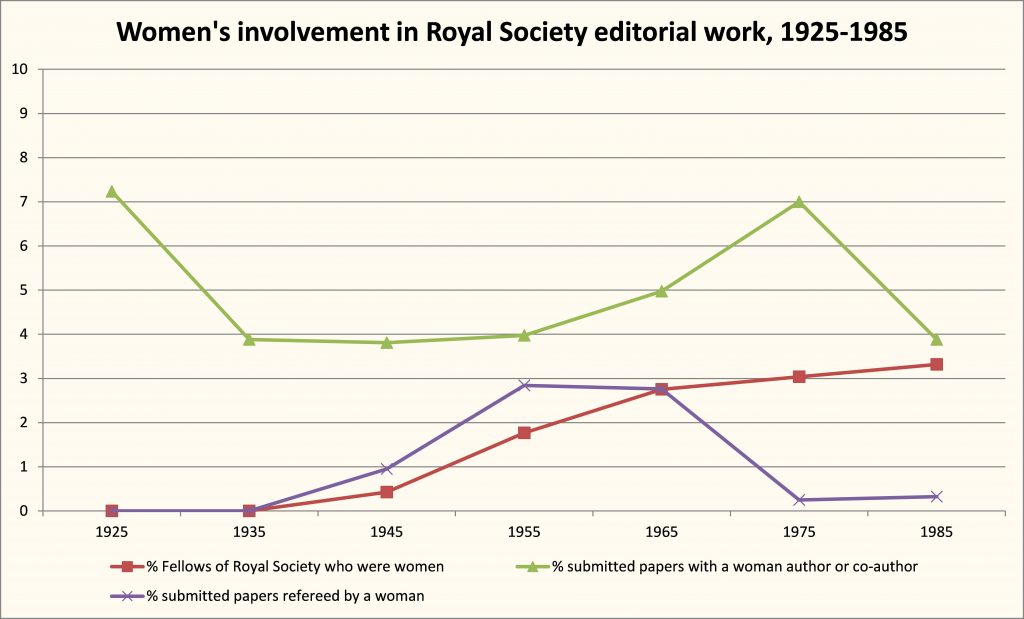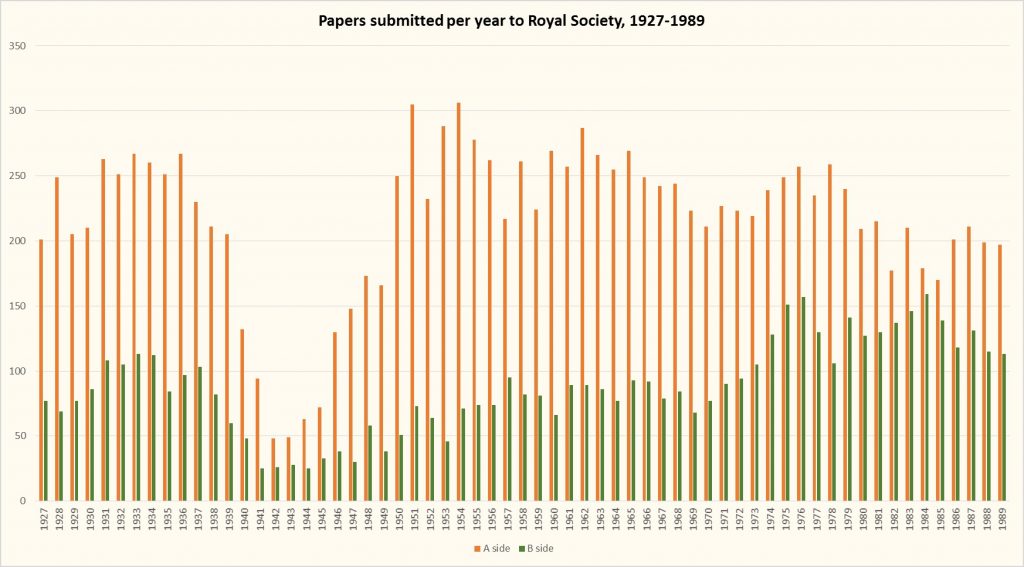Henry Oldenburg’s Transactions (1665-77) were issued monthly, but it was not until the late twentieth century that that periodicity was regained. The editors who followed Oldenburg struggled to maintain any regular periodicity; the early eighteenth-century volumes were sometimes annual, sometimes every two years, and often late.
Once the Royal Society took over the management of the Transactions in 1752, it was usually issued in two ‘parts’ a year, roughly in November and February. Authors received separate copies of their papers as soon as they had been printed, so these separate copies were often available (via private correspondence networks) more rapidly than the published ‘parts’.
Annual volumes were also issued, and this appears to have been the format that was used in the European book trade, and for non-commercial distribution to learned institutions in Europe and beyond.
Proceedings was launched in December 1831, originally to get the abstracts of Transactions papers into print more rapidly; it appeared roughly monthly, but only during the months the Society was in session (October to June). From the 1850s onwards, it was regularly suggested that it would be desirable to issue it at more defined intervals, and over the summer recess – but no changes were made.
The periodicity of Transactions is difficult to define by the late nineteenth century, because its main mode of issue had become separate papers. Whereas each monthly issue of Proceedings contained several papers, the longer papers approved for Transactions were issued as separate pamphlets as and when they became available from the printer. This system had originally been introduced for the free copies issued to fellows in the 1870s, and was extended to the free copies sent to learned institutions in 1902. By the early twentieth century, even the commercial issue of the Transactions seems to have been done as separate copies. Six-monthly parts were no longer issued, and annual volumes do not appear to have been supplied by the Society (though libraries could of course bind them if desired).
The Transactions papers were numbered, and were nominally associated with an annual volume. In some cataloguing systems, and for some periods, each paper is counted as an ‘issue’: thus, from the late 1930s to the 1990s, it can appear that issues of both series A and series B of the Transactions appeared anything from 12 to 30 times a year.
In 2001, both series of Transactions became monthly; and in 2008, they both became fortnightly, with 24 issues each per year.



